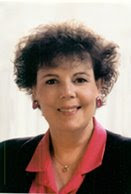Here are two totally different looking quilts made with my favorite block.
 Queen bed quilt
Queen bed quiltWall quilt

My quilts are colorful, graphic, vibrant, and joyful!
 Queen bed quilt
Queen bed quilt
 Paint Sticks are oil paint in a crayon like form, my favorite for stenciling on fabric.
Paint Sticks are oil paint in a crayon like form, my favorite for stenciling on fabric. This is a friendship block, I thought that it would be a fun change to paint the block. I drew the block design on freezer paper, ironed it to the back of the fabric. Masked the areas not to be painted with more freezer paper on the right side of the fabric and painted with textile paints. Great way to personalize a block!
This is a friendship block, I thought that it would be a fun change to paint the block. I drew the block design on freezer paper, ironed it to the back of the fabric. Masked the areas not to be painted with more freezer paper on the right side of the fabric and painted with textile paints. Great way to personalize a block!
 In these days, learning opportunities fall at every doorstep. New and clever techniques are taught in the latest publications, at our local guilds and on the internet. Three pages or three hours provide enough information to explore a new concept. Yet…sometime we long for an in-depth, hands-on study with a master teacher. We seek instruction that spell binds us and pulls our creative energy outward. We want an opportunity to focus, to learn, and see what we can really do in an unhurried and encouraging setting. Add good food, laughter with friends, and late-into-the-night sewing and you have the makings of an adventure we might all long for.
In these days, learning opportunities fall at every doorstep. New and clever techniques are taught in the latest publications, at our local guilds and on the internet. Three pages or three hours provide enough information to explore a new concept. Yet…sometime we long for an in-depth, hands-on study with a master teacher. We seek instruction that spell binds us and pulls our creative energy outward. We want an opportunity to focus, to learn, and see what we can really do in an unhurried and encouraging setting. Add good food, laughter with friends, and late-into-the-night sewing and you have the makings of an adventure we might all long for. Tell Santa you want to go to Nancy Crow's barn studio to take a class with Philippa Naylor, author of Quilting in the Limelight. She will be teaching in the States next year.
Tell Santa you want to go to Nancy Crow's barn studio to take a class with Philippa Naylor, author of Quilting in the Limelight. She will be teaching in the States next year.

 A Walk on the Wild Side
A Walk on the Wild Side


